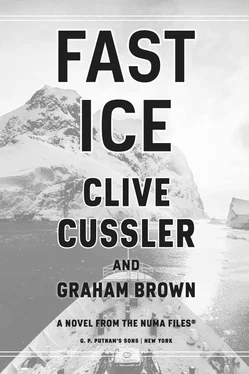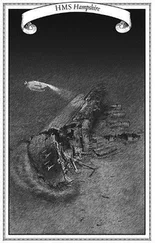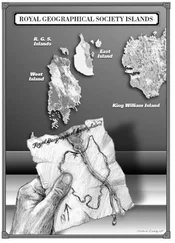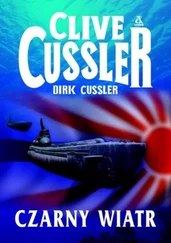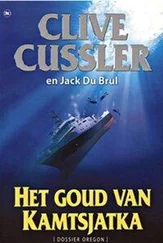“That would be too easy,” Rudi said. “And possibly dangerous at this point. I’m sending you to Finland. The European Ice Core Depository is in Helsinki. It just happens to be the largest storage facility in the world and a leading center for studying ice brought in from Antarctica.”
“What makes you think we’ll find what we need up there?”
“It was Kurt’s idea,” Rudi said, explaining the photograph and the connection to the Schwabenland expedition. “We counted seventeen expeditions to the geographical area that would have been New Swabia over the last two decades. Fifteen of those expeditions sent their core samples to Helsinki.”
Gamay got it. “So instead of wandering around Antarctica with drill in hand, you want us to look through a million core samples stored in a frozen warehouse?”
“A few thousand should probably do the trick.”
“Is that all?”
“It’s going to be slow and time-consuming,” Rudi told her. “But there’s no other avenue to approach this.”
“Level with me,” Gamay asked. “What are the chances of a hit? In other words, how big is New Swabia?”
“Over three hundred thousand square miles,” Rudi admitted. “The seventeen expeditions I referred to covered less than three percent of it. All told, they drilled in only one hundred and forty locations. And according to Cora’s passport, she spent extended time in Helsinki in the months before her team left for Antarctica. That tells us something.”
The connection was obvious. “Looks like I’m trading in my mud for ice.”
“Colder but cleaner,” Rudi said.
“I can live with that,” she said. “When do we leave?”
Before answering, Rudi stepped forward and removed the sharpened pointer from Gamay’s desk. “In an hour,” he said, checking his watch. “Correction. Fifty-eight minutes.”
“NUMA aircraft?”
“Not this time,” Rudi said. “You and Paul are booked on a direct flight out of Dulles.”
“No time to pack?”
Rudi shrugged. “You can buy clothes when you reach Finland. Just put it on the company card.”
Gamay shook her head in disappointment. “Glassware and furniture,” she said.
“What?”
“One buys glassware and furniture in Helsinki,” she explained. “If you’re going to send me somewhere with a blank check for clothes, it should be Paris or Milan.”
Rudi brightened. “If you and Paul can point us in the right direction, I’ll send you to both places with the card fully loaded.”
14
HELSINKI, FINLAND
Paul Trout stood on the snow-covered sidewalk outside a clothing store in the center of Helsinki. He wore a long winter overcoat, fur-lined boots, a heavy scarf and a knit cap. His gloved hands were shoved deep into his pockets and he’d whirled the scarf around his face three times, covering everything except his eyes. Somehow, he was still chilled to the bone.
As he attempted to keep his chin tucked in under the scarf, Gamay laughed at him. “You look like a turtle.”
“A frozen turtle,” he replied.
“A giant frozen turtle,” she corrected.
Paul was six foot seven. With the boots on, he stood nearly six foot nine. Frankly, he’d been amazed to find clothes that fit. On average, it turned out, Nordic people were among the tallest in the world. That played to his advantage.
“I know why they put the ice core facility in Helsinki,” he said. “Because if the power fails, the ice still wouldn’t melt.”
The outside temperature was seventeen degrees Fahrenheit, only ten degrees colder than Washington had been, but Helsinki was known for the cold, damp wind blowing in off the Gulf of Finland and that wind lived up to its reputation. To make matters worse, it was already dark, the sun having set around four in the afternoon.
“You might be right about that,” Gamay said, fiddling in her pockets as if she was looking for lost change.
“What are you doing?” Paul asked.
“Activating my hand-warming packets,” she said. She’d shoved two of them into each pocket and was massaging them to get the chemical reaction going. That done, she adjusted a pair of furry earmuffs. “If this doesn’t work, I’m getting one of those giant Russian hats. I hear they keep your whole body warm.”
“Communist propaganda,” Paul insisted. “Which way to the facility?”
Gamay looked at the signs. They were written in two languages, Finnish and Swedish, neither of which she could read. But the letters EICD were also stamped on the sign. “This way,” she told him. “Eight blocks. We could take a cab, but walking will do us good.”
“More Communist propaganda,” Paul replied. “But lead on. I shall gladly follow.”
Despite Paul’s complaint, he found the walk enjoyable and scenic. Lampposts on both sides of the street were wrapped in garlands and holiday lights. An enticing glow spilled from the windows of shops, while the center of each roundabout displayed ice sculptures lit up by colorful pastel floodlights.
“Assuming we don’t freeze to death,” he said, “this might be a grand place to explore.”
“In July or August,” Gamay insisted.
Paul thought that sounded reasonable.
They soon arrived at a sprawling three-story structure. Light streaming through large windows of triple-pane glass made it look warm and inviting inside while the steeply sloped copper roof and exposed steel beams gave it a modernistic style. The illuminated letters shone from a sign by the door.
“This is it,” Gamay said.
Entering the building and signing in, they were met by a man named Matthias Räikkönen. He was tall and thin, with wispy gray hair and hazel eyes. He had peaked eyebrows and a long, narrow nose. The features gave him a hawk-like appearance.
After shaking the man’s hand, Paul stood back and allowed Gamay to do the talking. She was the charming one, after all.
“Thanks for meeting us on such short notice,” Gamay said.
“It is the first time I’ve been honored with a call from NUMA,” he replied, speaking English. “The reputation of your organization precedes you. How may I be of service?”
Gamay had spent time on the phone with him as they flew across the Atlantic. But she hadn’t given him the details of what they were after.
“We’re planning an Antarctic expedition,” she said. “To an area near the Fimbul Ice Shelf and deeper into Queen Maud Land. We’re building on the work of a former colleague of ours. You might know her. Cora Emmerson?”
“Oh, yes,” Räikkönen said. “Cora was a fixture around here for a while. Always bringing us biscuits or cakes when she came in.”
Gamay had been thinking they’d have to beat around the bush asking about Cora’s work but now sensed an opportunity to cut to the chase. “Would you be able to show us what she studied when she was here?”
“Of course,” the man told her. “Have a seat. And take off those heavy coats. All our data is recorded and digitized. We can look at everything from right here in my warm and cozy office.”
Paul and Gamay shed their winter layers, feeling several pounds lighter by the time they were finished. As they made themselves comfortable, Räikkönen sat at his desk, tapping away on a keyboard. “Are you certain that you want to look at all the cores Cora studied? If so, you may be here through spring.”
Gamay glanced over at Paul and then turned back to their host. “We’re most interested in the data from her later studies. The last cores she looked at before she left for South Africa.”
“That should narrow things down,” Räikkönen promised, tapping away. “Let me check the dates. Ah . . . Here’s the list.”
Читать дальше
